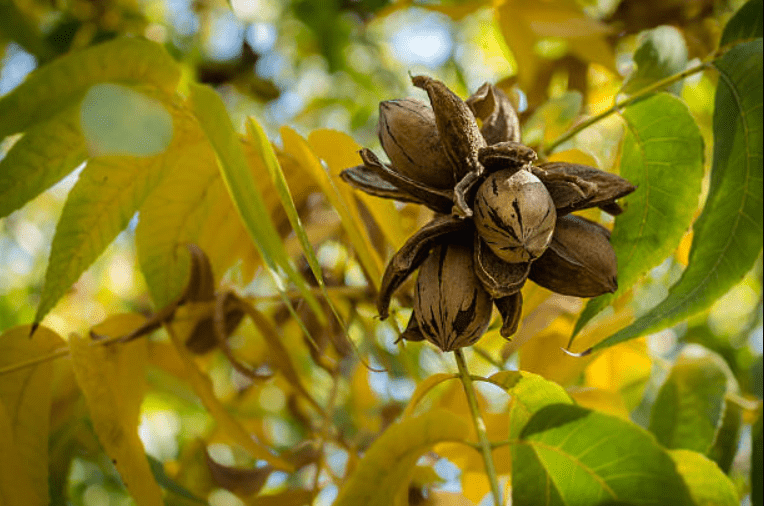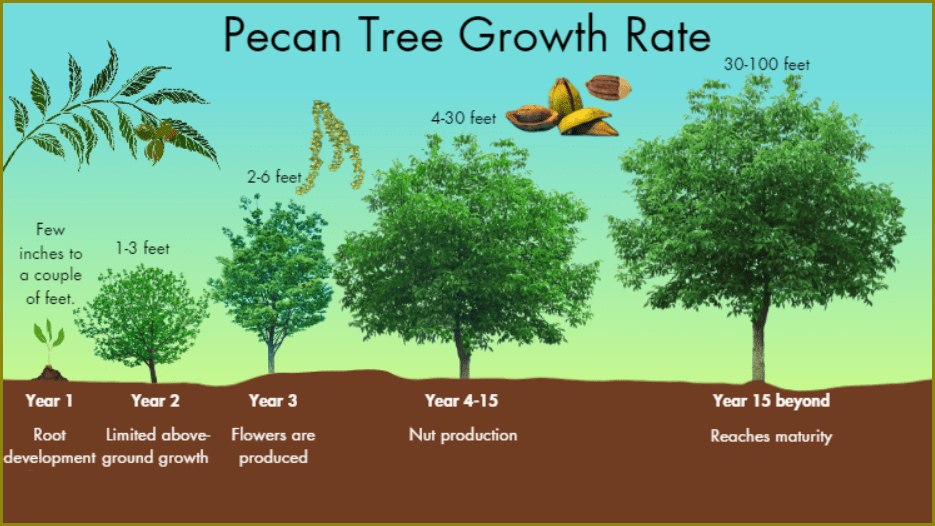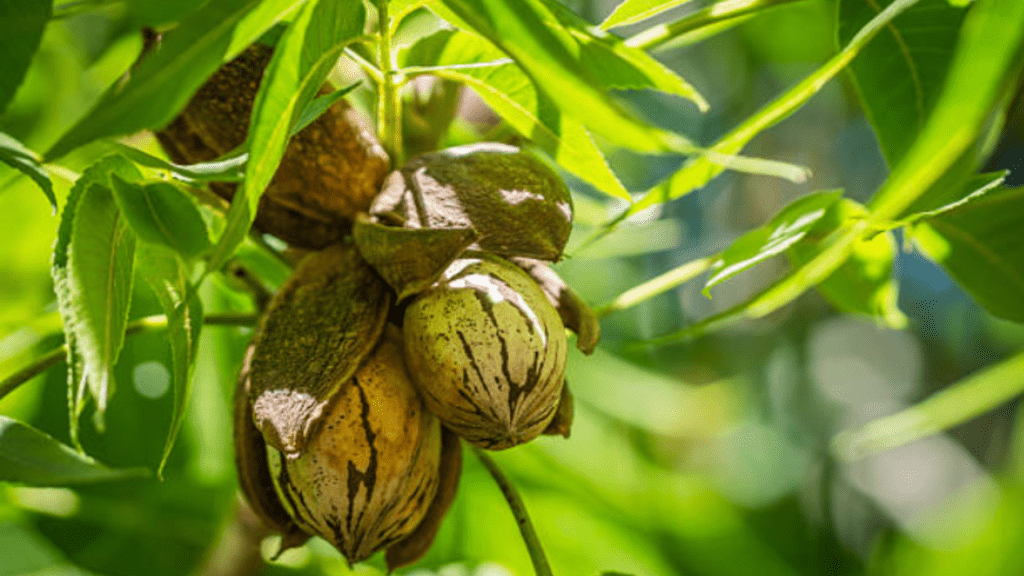
Understanding the Pecan Tree Root System for Optimal Growth and Tips
Pecan trees are known for their delicious nuts, but what lies beneath the surface is just as fascinating. The root system of a pecan tree plays a crucial role in its growth and stability, providing support and nourishment for the tree. In this post, we will delve into the hidden depths of the pecan tree root system, exploring its structure and importance for the overall health of the tree. Understanding the intricacies of the root system can help you better care for your pecan trees and ensure their long-term growth and productivity.
For any tree, a robust root system is the foundation for life. It anchors the tree against the fiercest winds and the mightiest storms, silently searching for the water and nutrients needed for growth. But the pecan tree takes this hidden world to a whole new level. Unlike many trees that send a single taproot deep into the earth, pecan trees develop a complex and powerful network of roots that ensure their longevity, resilience, and of course, their prized nut production.

Table of Contents
ToggleUnderstanding the Importance of Pecan Tree Roots
Pecan trees (Carya illinoinensis) are prized for their delicious nuts and towering canopies, but beneath the surface lies a crucial component of their vitality: their root system. The significance of pecan tree roots extends far beyond anchoring the tree; they play a fundamental role in nutrient uptake, water absorption, soil health, and ecosystem stability. Exploring the importance of pecan tree roots unveils their essential contributions to the tree’s growth and overall ecosystem health. For many, the image of a pecan tree conjures up visions of delicious nuts and shady summer afternoons. But beneath the surface lies a hidden world – the pecan tree root system – a complex network that plays a vital, and often underappreciated, role in the tree’s success. Understanding these roots is crucial for anyone considering planting a pecan tree.
Anatomy and Functionality
Pecan tree roots exhibit a diverse array of structures and functions optimized for their survival and growth. The taproot, originating from the seed, serves as the primary anchor, delving deep into the soil to provide stability and support. Lateral roots extend horizontally, branching out to form an intricate network that maximizes surface area for nutrient absorption and water uptake. This network also facilitates interactions with beneficial soil microorganisms, such as mycorrhizal fungi, enhancing nutrient availability and promoting soil health.
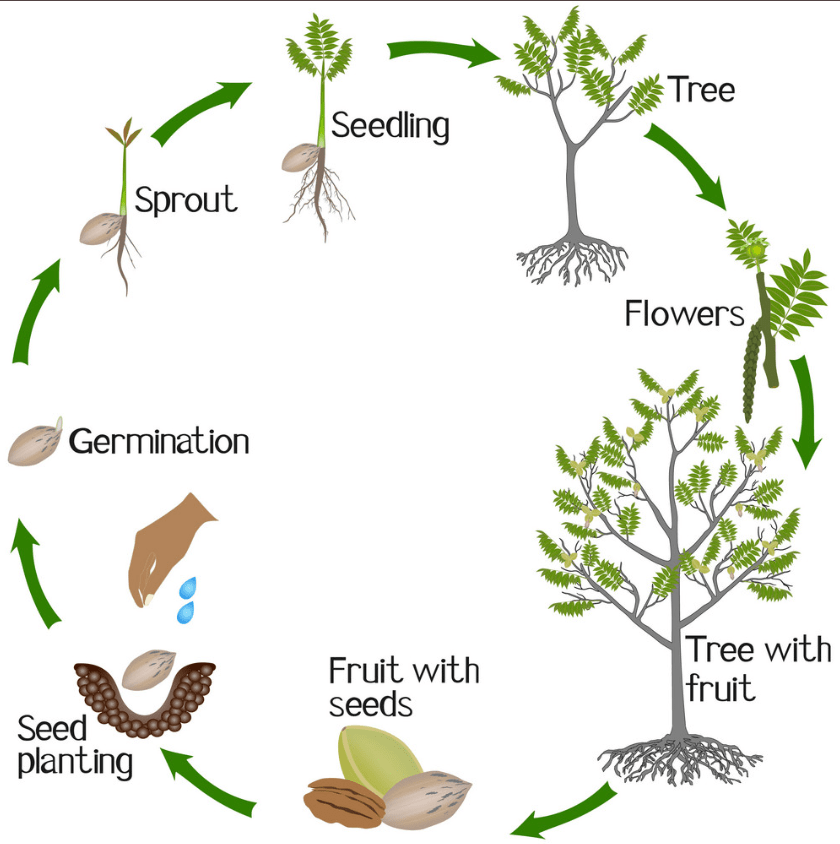
Demystifying the Pecan Root System
Pecan trees often surprise people with their root structure. Unlike many of their deep-rooted brethren, pecan trees may not have a prominent taproot, especially those grown in nurseries. This taproot, which can delve deep into the soil in search of water, is often pruned during the nursery process to encourage a more fibrous root system. However, the lack of a taproot doesn’t diminish the power of the pecan root system. Instead, pecan trees rely heavily on a network of lateral roots that radiate outward from the base of the trunk. These lateral roots, with their fine root hairs, are responsible for efficiently absorbing water and nutrients from the surrounding soil.
Nutrient Uptake and Water Absorption
One of the primary functions of pecan tree roots is to absorb essential nutrients and water from the soil. Fine root hairs, located on the tips of feeder roots, increase the surface area available for nutrient absorption, allowing the tree to extract vital elements such as nitrogen, phosphorus, potassium, and micronutrients. Additionally, the extensive root system enables efficient water absorption, ensuring the tree’s hydration and survival, particularly during periods of drought or heat stress.
Ecosystem Interactions
Pecan tree roots interact with the surrounding ecosystem in myriad ways, supporting biodiversity and ecological resilience. The diverse microorganisms associated with pecan tree roots contribute to soil biodiversity, forming symbiotic relationships that benefit both the tree and the soil community. Root exudates released by pecan trees serve as a food source for soil microbes, fostering nutrient cycling and enhancing soil fertility. Moreover, the stable soil structure created by pecan tree roots provides habitat for soil-dwelling organisms, further enriching the ecosystem.
Exploring the Depth and Structure of Pecan Tree Roots
Pecan trees, known for their delectable nuts, are giants with a hidden secret – their root system. Unlike the stereotypical image of a single taproot anchoring a tree, pecan trees boast a fascinating network of roots that delve deep and spread wide. Understanding this hidden world is crucial for anyone considering planting a pecan tree, ensuring both the tree’s success and the safety of surrounding structures.
Unveiling the Root Structure:
Pecan trees often surprise when it comes to their root structure. Unlike many deep-rooted trees, they may not have a prominent taproot, especially those grown in nurseries. Nursery practices often involve pruning the taproot to encourage a more fibrous root system. But fear not, the lack of a taproot doesn’t diminish the power of the pecan root system. Instead, these trees rely heavily on a network of lateral roots. Imagine these as strong arms radiating outward from the base of the trunk. These lateral roots, with their fine root hairs, are the real workhorses, tirelessly searching for water and nutrients from the surrounding soil.
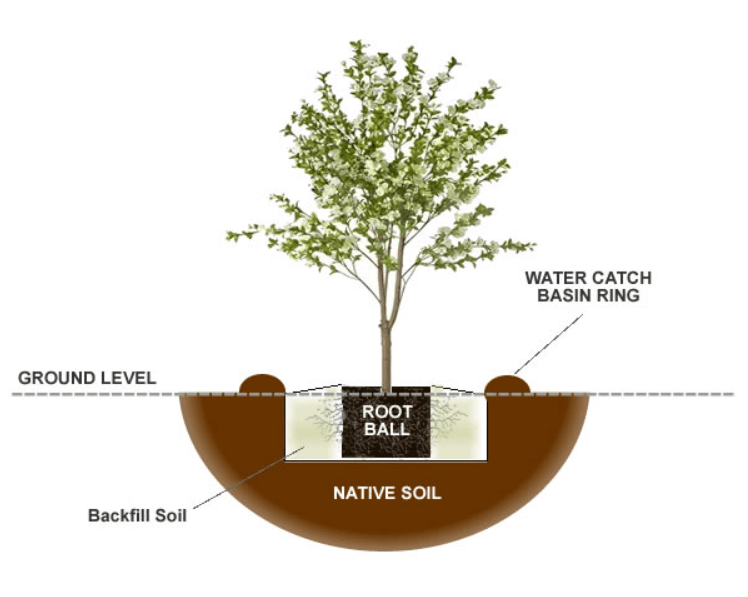
A Story of Depth and Spread:
The pecan root system is impressive in both its depth and spread. While the exact depth can vary depending on soil conditions, pecan tree roots can reach downwards of 20 to 30 feet, venturing deep into the earth to access vital water reserves, especially during dry periods. However, the true marvel lies in the horizontal spread. These lateral roots can extend outwards an astonishing 50 to 70 feet from the trunk! This vast network creates a massive zone of influence, allowing the pecan tree to efficiently gather resources and maintain its impressive stature.
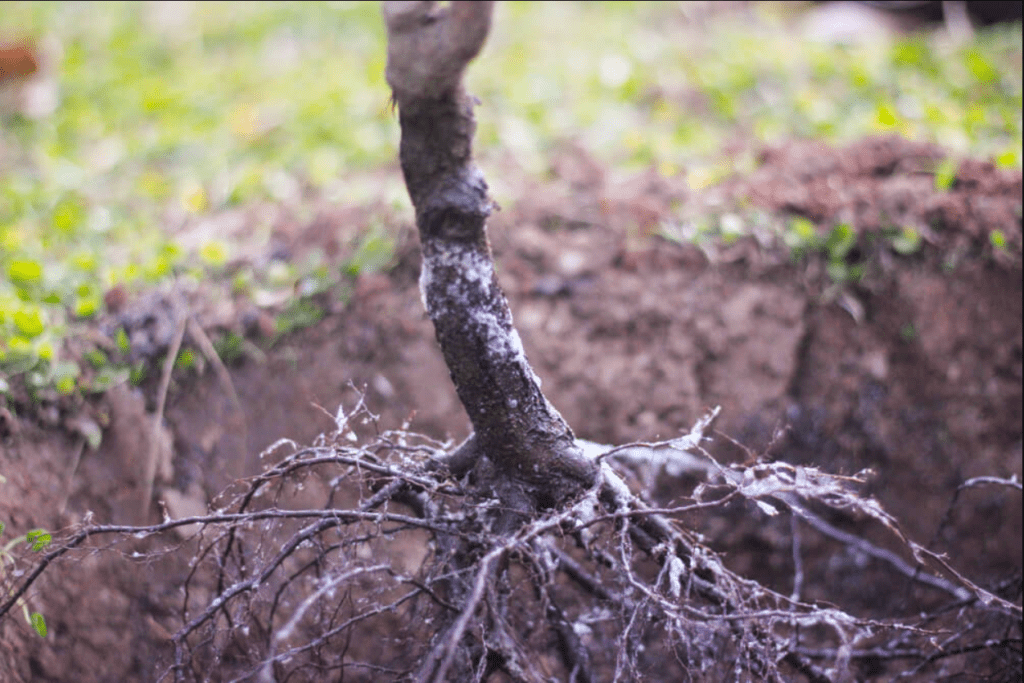
The Benefits of a Powerful Root System:
The extensive root system of a pecan tree offers a multitude of benefits:
- Stability and Wind Resistance: The vast network of lateral roots acts like a natural anchor, providing incredible stability and wind resistance. This is crucial for these tall trees, ensuring they withstand strong winds without succumbing to toppling.
- Efficient Resource Acquisition: The depth and spread of the root system allow for efficient water and nutrient uptake from a large area of soil. This not only contributes to the overall health and longevity of the tree but also plays a vital role in nut production, ensuring a bountiful harvest.
- Potential for Erosion Control: In some cases, the pecan root system can help prevent soil erosion. The network of roots binds soil particles together, creating a more stable structure less susceptible to washout from heavy rains.
The Role of Pecan Tree Roots in Providing Stability and Support
Pecan trees, towering giants known for their delectable nuts, possess a hidden strength – their root system. Unlike the single taproot of many trees, pecan trees boast a complex network of roots that delve deep into the earth and spread outwards like a web. This remarkable structure plays a vital role, acting as the silent guardian of the tree’s stability and support.
The Power of Laterals:
Unlike some trees, pecan trees often lack a prominent taproot, particularly those grown in nurseries. Nursery practices often involve pruning the taproot to encourage a more fibrous root system. However, this doesn’t diminish the pecan tree’s anchoring power. Instead, these trees rely heavily on a network of lateral roots. Imagine these as strong arms radiating outward from the base of the trunk. These lateral roots, with their fine root hairs, act like tiny anchors, firmly gripping the surrounding soil.
A Deep Commitment to Stability:
The depth of the pecan root system is impressive. While the exact depth can vary depending on soil conditions, pecan tree roots can reach downwards of 20 to 30 feet. This deep penetration provides several stability benefits:
- Wind Resistance: During strong winds, the deep roots act as a counterbalance, preventing the tree from being uprooted. This is especially crucial for these tall trees, ensuring they withstand even the fiercest storms.
- Upright Growth: The deep roots provide a firm foundation, allowing the tree to maintain its upright posture and resist the forces that could cause it to lean or tilt.
- Soil Stabilization: In some cases, the deep roots can help prevent soil erosion on slopes. They act like anchors, holding the soil in place and preventing it from washing away during heavy rains.
The Strength of Numbers:
The true marvel of the pecan root system lies in its vast horizontal spread. These lateral roots can extend outwards an astonishing 50 to 70 feet from the trunk! This creates a massive zone of influence, providing incredible stability in several ways:
- Wider Anchor: The extensive lateral network acts like a broader base of support, further enhancing the tree’s resistance to wind and other forces that could cause it to topple.
- Improved Grip: The sheer number of lateral roots provides a more extensive grip on the surrounding soil, preventing the tree from being easily dislodged.
- Adaptability: The expansive root system allows the tree to access water and nutrients from a larger area of soil. This comes in handy during dry periods or in situations where the soil quality isn’t ideal.
Maintaining a Healthy Pecan Tree Root System
Pecan trees, with their towering stature and delicious nuts, are a prized addition to any landscape. But beneath the surface lies a hidden hero: the root system. This complex network plays a critical role in the tree’s health, stability, and productivity. By understanding its needs and implementing proper care practices, you can nurture a thriving root system that empowers your pecan tree to flourish for years to come.
Understanding the Root System:
Unlike some trees, pecan trees often lack a prominent taproot. Instead, they rely on a network of lateral roots that spread outwards and downwards. These lateral roots, with their fine root hairs, are responsible for absorbing water and nutrients from the surrounding soil.
Key Practices for a Healthy Root System:
- Planting in the Right Place: Location is crucial. Choose a site with ample space to accommodate the mature root spread, which can reach upwards of 50-70 feet from the trunk. Avoid planting too close to structures, walkways, or underground utilities to prevent future damage.
- Watering Wisely: While mature pecan trees are drought-tolerant, young trees with shallower root systems require consistent watering during their first few years. Aim for deep watering that encourages root growth downwards.
- Mulching Magic: Apply a 2-3 inch layer of organic mulch around the base of the tree (keeping it a few inches away from the trunk) to retain moisture, suppress weeds, and regulate soil temperature. This creates a healthy environment for root growth.
- Minimize Soil Compaction: Compacted soil suffocates roots and hinders their ability to access water and nutrients. Avoid excessive foot traffic around the tree. Consider aerating the soil every few years with a core aerator to improve air circulation.
- Fertilize Strategically: Overfertilizing can harm roots. Consult a local nursery professional for recommendations on fertilizer type and amount specific to your soil conditions and tree age. Young trees generally require less fertilizer than established trees.
- Beware of Salt Damage: If you live in an area with winter salt application, choose salt-tolerant pecan tree varieties. Mulching around the base can also help protect the roots from salt damage.
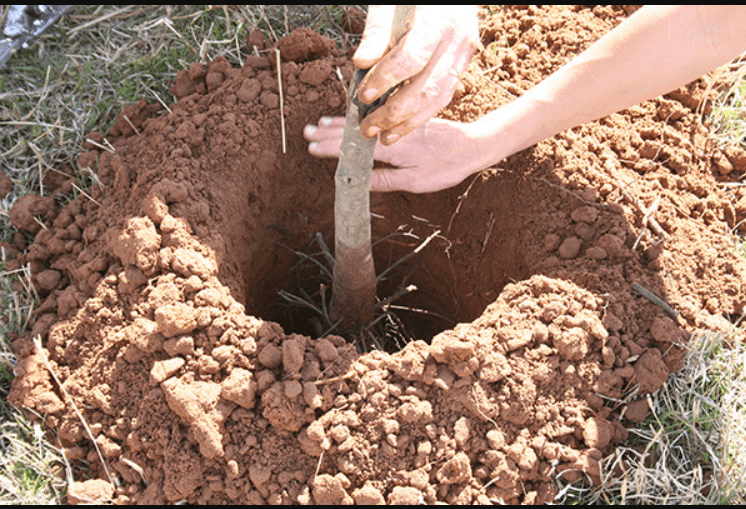
Additional Tips:
- Monitor for Signs of Stress: Signs like wilting or yellowing leaves might indicate insufficient watering or root problems. Address these issues promptly to ensure the health of the root system.
- Promote Beneficial Microbes: Consider adding compost or other organic matter to the soil to encourage beneficial microbes that can aid root function and nutrient uptake.
The Rewards of a Healthy Root System:
By implementing these practices, you’ll be nurturing a healthy pecan tree root system that offers numerous benefits:
- Improved Stability: Strong roots provide better anchorage, making the tree more resistant to wind and storms.
- Enhanced Water and Nutrient Uptake: A healthy root system allows the tree to efficiently access essential resources for healthy growth and optimal nut production.
- Disease and Pest Resistance: Healthy roots are more resilient to disease and pest infestations.
As we delve deeper into the complexities of pecan tree roots, there are ample opportunities for future research to enhance our understanding of these vital components of pecan ecosystems. By implementing sustainable management practices and conservation efforts, we can ensure the continued growth, stability, and resilience of pecan trees and the ecosystems they support. Ultimately, recognizing the importance of pecan tree roots is key to preserving these iconic trees and the benefits they provide to both humans and the environment.
Frequently asked questions (FAQ)
Pecan tree roots typically grow to a depth of about 6 feet, but the majority of the root system is found within the top 3 feet of soil.
Pecan tree roots can spread laterally up to two to three times the diameter of the tree’s canopy, which can be quite extensive.
While pecan tree roots are not as aggressive as some other species, they can cause damage if planted too close to foundations, sidewalks, or driveways.
It’s best to avoid planting directly under a pecan tree due to competition for nutrients and water. However, some shade-tolerant plants may coexist well at a distance from the tree’s base.
Pecan trees thrive in well-drained, deep, sandy loam soils with a pH of 6.0 to 7.0. They require good drainage to prevent root rot.
To protect the root system, avoid heavy machinery within the tree’s drip line, minimize soil compaction, and ensure proper irrigation during and after construction activities.
Pecan trees require regular watering, especially during dry periods. Young trees need deep watering every 7-10 days, while mature trees may require less frequent but deep watering.
Yes, pecan tree roots can compete with nearby plants for water and nutrients, and the tree produces allelopathic compounds that may inhibit the growth of some plants.
Common root diseases include root rot caused by Phytophthora and nematode infestations. Ensuring proper drainage and soil health can help prevent these issues.
To improve root health, ensure proper watering, mulching, soil aeration, and avoid compacting the soil around the tree. Regularly check for pests and diseases.

